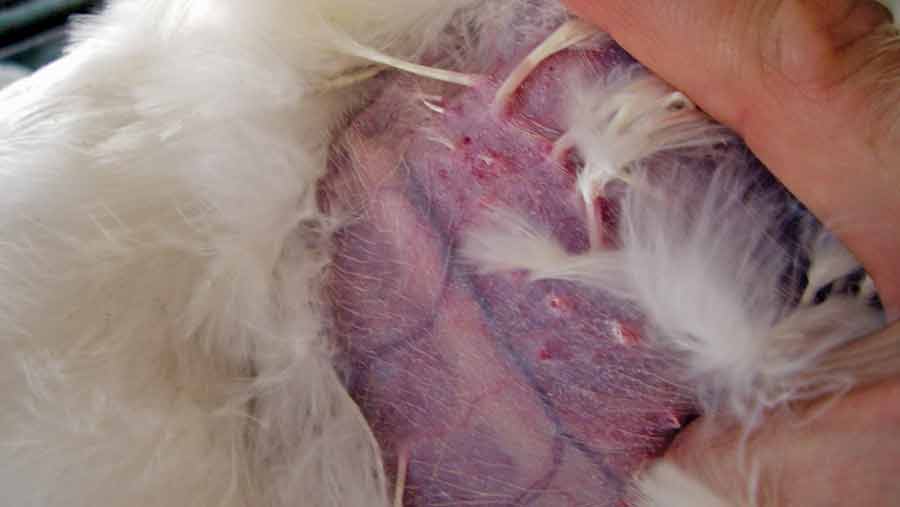How to maximise broiler breeder performance

Feeding practices, group selection and lighting all play a part in maximising egg production in broiler breeders, as Mohamad Hallas explains.
Avoiding excess fleshing requires careful management as broiler breeders are selected to efficiently convert feed to body weight.
It is also important to understand how to feed the hen in the different phases of rearing, during the onset of lay and as she matures towards peak production.
Phase 1: Day 1 to 4 weeks of age
This is a critical period for development of organs and physiological systems, including the immune system.
Regardless of the feed type and feeding programme, achieving the standard body weight is a top priority for the farmer. The bird should express its genetic potential in terms of growth and robustness.
A good vaccination programme that provides the bird with good protection against prevalent field viruses, bacteria and parasites is a priority for healthy rearing.
However, biosecurity can actually be more important. The most successful facilities in disease-prone areas are those who use two showers in and a shower out system, in addition to complete clothing and boot changes.
Phase 2: Week 5 to week 12
This phase is known as the “uniformity correction period” and this can be achieved through careful feed intake and body weight management.
Birds should be selected individually between weeks three and four, and regrouped into “target weight”, “underweight” and “over-weight” categories. Birds will then have equal access to feed and water and will grow homogeneously.
For the heavy group, the minimum weekly feed increment/hen should be one gramme. Never reduce the feed intake.
For the underweight group, a maximum of 10% over feed increment/week/hen can be administered, otherwise birds can get obese with a small frame, causing mating problems in the laying period.
Minimum feeding space should be 10cm/hen for chain feeders and no more than 13 females per 35cm diameter pan feeder.
Phase 3: Week 12 to Week 16
The main target is to keep good uniformity and to ensure hormonal development without fleshing.
By now 95% of skeletal development is achieved, so there is no way to correct frame size anymore.
Regrouping the homogenous birds together gives birds with similar weights and frames an equal chance for feed intake, allowing them to maintain good uniformity. Hormonal development will need minimal, but good quality nutrient intake.
Feed space per hen should not be less than 15cm/hen on chain and no more than 12 hens per round pan feeder.
Birds should be kept tranquil during this period to avoid any injuries or feather licking, which can lead to pecking. Providing 5 lux of cool white light will help.
Introducing perches will help hens become acclimatised, allowing them to access the laying nests easily in the laying house.
Phase 4: Week 16 to week 20
This is the most important period of preparing the hen for maximum egg production.
The hen needs to acquire the necessary body reserves for the onset of lay. This depends on the glycoprotein accumulated inside the reserves and not on the excess energy provided by pushing more feed intake.

Sufficient fat on the pelvic bone shows the bird is ready for light stimulation
Aim to increase the fleshing of the breast of the hens, as well as the fat deposition measured on the pelvic bones and under the wing.
he best performing flocks show an increase of hen body weight of no less than 33% between 16 and 20 weeks of age.
Feed increment should be enough to ensure a body weight profile parallel or better than the standard curve. And the feed regimen should be back to daily feeding at 16-17 weeks of age, which helps maintain a homogenous flock.
Selecting or regrouping the birds with similar body weight and frame will help the mixing of hens with the males and for the light stimulation timing.
Phase 5 : 21 weeks to peak production
It is essential to transfer the small birds from all rearing houses to one house and deal with them as a younger homogenous flock. Delay the light stimulus until they are sexually mature with enough body reserves.
The overweight birds can be transferred to one house and need to be given four hours of additional light at 147 days of age.
Mixing males with females should be done only if both are sexually synchronised. This can be at 22 weeks. Introduce the first 5% of the males, followed by the next 2%, and then another 2% in three- to five-day intervals.
If males are aggressive, wait a week. A scenario of non-sexually mature hens running away from males, causing non-fertile egg production, is to be avoided.
Feeding hens should be conservative until onset of lay. Administering extra energy for the birds to force egg production will only lead to over fleshing, fat deposition and higher hen mortality.
Mohamad Kallas is a regional technical manager with Cobb Europe.
